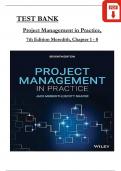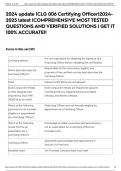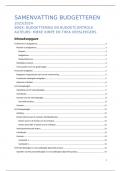Exam (elaborations)
WJEC Criminology Questions with 100% Actual correct answers | verified | latest update | Graded A+ | Already Passed | Complete Solution
- Module
- WJEC Criminology
- Institution
- WJEC Criminology
WJEC Criminology Questions with 100% Actual correct answers | verified | latest update | Graded A+ | Already Passed | Complete Solution
[Show more]












